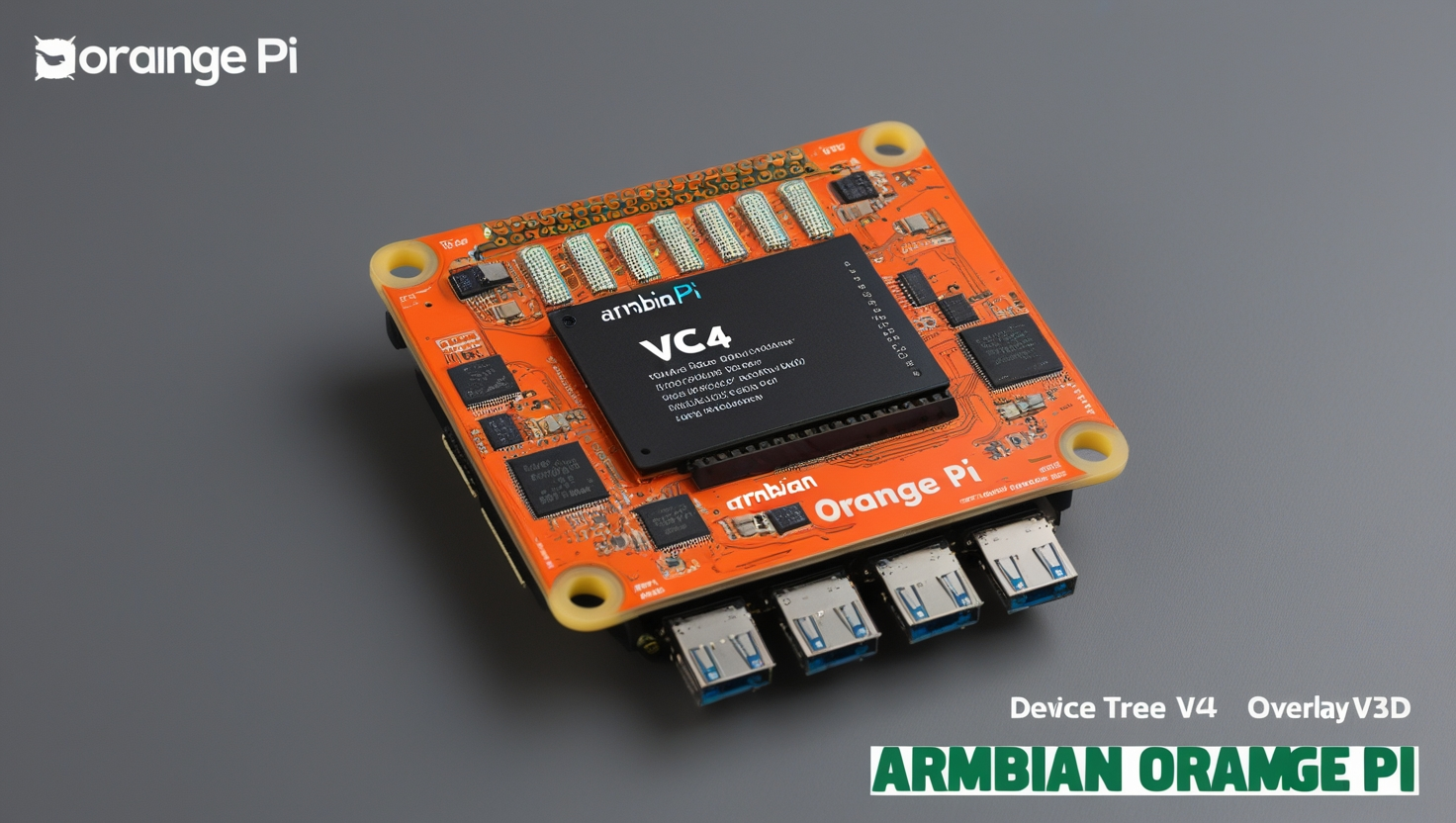Introduction
The phrase “dtoverlay vc4 fkms v3d armbian oramge pi” encapsulates a key aspect of setting up and configuring a Linux-based operating system like Armbian for the Orange Pi. This SBC is very popular today due to its multiple functionality and affordability and is as popular as Raspberry Pi. Fundamentally, this configuration reference is directly related to the complex handling of the graphics stack involving the accelerations of Orange Pi’s underlying hardware to deliver users’ graphical performance improvements as well as make projects involving graphical interfaces or GPU computations more intuitive as a result of this board.
The Mechanism of Device Tree Overlays
In Linux, device tree overlays that are marked by the “overlay” prefix represent an important part of modifying device usage. Device trees provide a method of describing HW to the Kernel without using hard-coded information, it is an interface layer between the system HW and the operating Kernel. The “dtoverlay vc4 fkms v3d armbian oramge pi” string is part of this ecosystem, specifically pointing to the VC4 (VideoCore IV) graphics driver configurations.
The “fkms” and “v3d” components in this configuration carry further subdivision. For Fake Hardware, KMS has different implications: Applications that need KMS but do not use all its capabilities are supported by the feature called ‘’Fake KMS’’ or ‘’FKMS’’. At the same time “V3D” means the VideoCore IV 3D, which is responsible for the 3D graphics acceleration or the driver for the video core IV hardware. These factors ensure that our Orange Pi gains the best graphical performance under Armbian os.
Armbian: Every company needs the Foundation for Optimized Operation.
Armbian is an aJerasured slimmed down distribution based on Ansibased on Arm Linux that is built with optimization for ARM SBCs like Orange PiCompact for ARM-based SBCs like Orange Pi. Armbian is well-liked for its performance, intensive solutions, and rather rich community. Configuring “dtoverlay vc4 fkms v3d armbian oramge pi” within Armbian maximizes the potential of the Orange Pi by tapping into the advanced capabilities of the hardware’s GPU.
As far as the overlay is concerned, it needs to be as simple as possible and the Orange Pi’s graphical subsystem is perfect when accurately overlaid. This translates into better smooth rendering, quick rendering of the graphical objects, and a rock-stable environment for users who are using it in building media centers, gaming systems, or any application where rich graphical interfaces take prime importance.
Orange Pi: A Capable Alternative
Like the Raspberry Pi, the Orange Pi has several models to choose from depending on the nature of the project in hand. Makers and developers can have this board because it has powerful processors, GPIO pins for hardware interfacing, and strong multimedia features. The integration of “dtoverlay vc4 fkms v3d armbian oramge pi” unlocks the full potential of its graphical capabilities, aligning well with its hardware specifications.
Since the Orange Pi will be changing as well when it comes to the mentioned aspect, its compatibility with various overlays will also change. The VC4 driver is important here for example as its aspect of the chip is not only used for full high-definition video output but also used for rendering of 3D graphics. For anyone who is installing a new desktop environment or creating a graphical application, this configuration will make a big difference.
Setting Up the Configuration
To implement “dtoverlay vc4 fkms v3d armbian oramge pi,” users typically modify the boot configuration files of the Armbian system. This means adding precise parameters such as armbianEnv.txt or config.txt in the boot partition of the microSD card or eMMC storage. When adding “dtoverlay=vc4-fkms-v3d” in the config.txt file it tells the system to load the correct drivers and configure the GPU for the chosen operating system.
The Armbian community tends to compile images with such configurations to be enabled by default in advance. However, for those delving into custom setups, understanding and correctly implementing “overlay vc4 fkms v3d armbian oramge pi” ensures a more tailored and efficient system configuration.
Benefits of Using “dtoverlay vc4 fkms v3d armbian oramge pi”
There are manifold advantages to using this particular overlay and configuration. To begin with, it makes the software to be compatible with high-end graphical applications as well as libraries like OpenGL and Vulkan. This is important for applications that demand complex graphical precision and three-dimensional acceleration. Also, it enhances video playing and encoding which makes the Orange Pi okay for use in media-based projects.
Secondly, it helps to improve the user experience in the desktop environment. Games experience enhanced graphics, and non or less lag or stuttering on the graphical interfaces. This is especially important if users switch from more mainstream PCs or notebooks to SBCs for basic computing tasks.
Challenges and Considerations
While the “dtoverlay vc4 fkms v3d armbian oramge pi” setup provides substantial benefits, it is not without its challenges. Its correct performance seems to directly depend upon the understanding of the OS known as Armbian and its configuration files. Furthermore, the compatibility of the piece differs with Orange Pi models, and therefore users are required to check if it supports this overlay.
The last aspect is the generalized power management of the laptop. Data suggests that chipsets with enhanced graphics throughput bring in more power usage and, therefore, should be backed by stable power delivery. In addition, there can be overheating when performing complex procedures; therefore, cooling mechanisms are critical.
Expanding the Possibilities
The integration of “dtoverlay vc4 fkms v3d armbian oramge pi” serves as a gateway to numerous possibilities. Those users can increase graphical performance for complex graphical applications, create a strong media center, or just try AI and machine learning algorithms that use GPU accelerators. Having the ability to provide fine-grained graphics settings guarantees that users can easily optimize the systems according to their demands while controlling the balance perfectly.
This flexibility is key to why the Orange Pi, when using Armbian, is so renowned for use in teaching, learning, and professional spaces. Despite not being bound to the hardware aspects it provides users with the option to solve problems creatively.
Conclusion
The phrase “dtoverlay vc4 fkms v3d armbian oramge pi” is more than a configuration directive—it represents the intersection of hardware and software optimization for the Orange Pi within the Armbian ecosystem. Thus, learning and implementing this overlay helps the users maximize possible SBC graphical capabilities when using it for otherwise numerous applications.
The configuration also ensures Orange Pi stays as relevant and capable a platform in the market of single-board computing as it was at its inception regarding media playback and graphical computing. Its ability to run and link seamlessly with Armbian and take advantage of superior graphics drivers makes it favorable for anyone looking for the ultimate out of an SBC.
Whether you’re a seasoned developer or a newcomer to the world of SBCs, exploring the potential of “dtoverlay vc4 km v3d armbian oramge pi” is sure to enhance your projects and deepen your appreciation for the capabilities of modern computing platforms.



